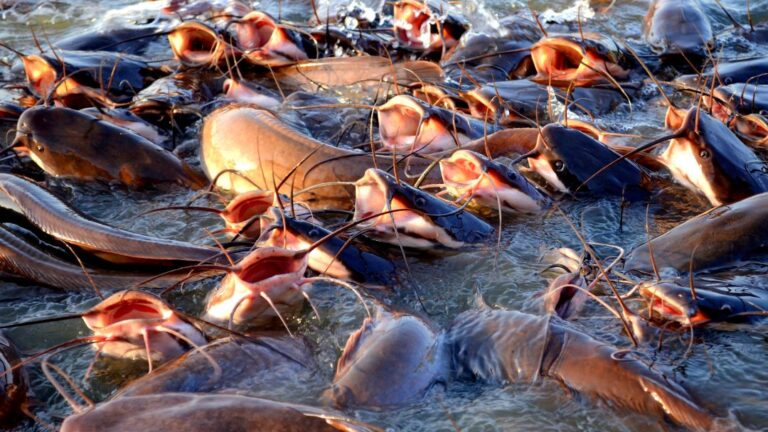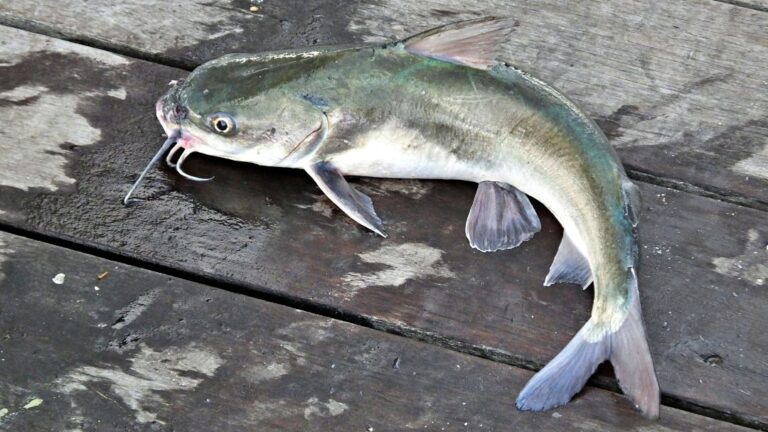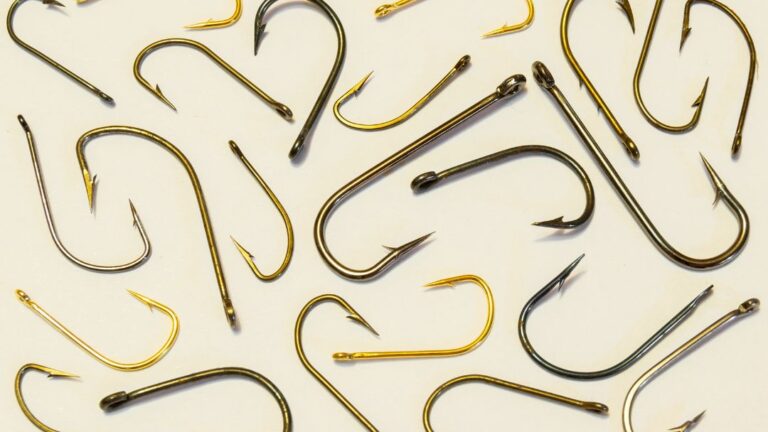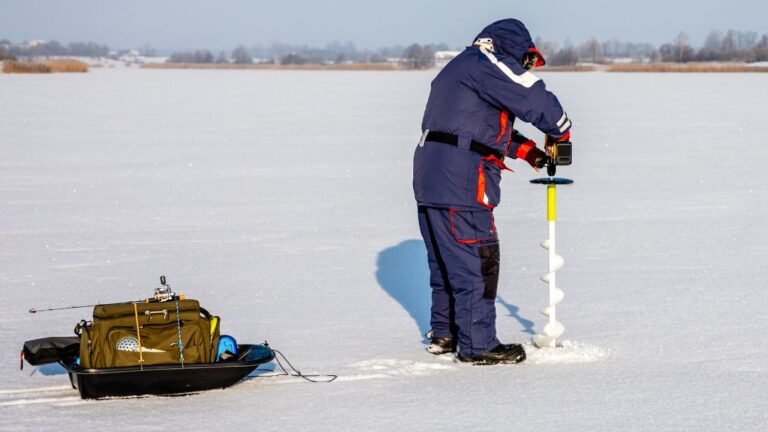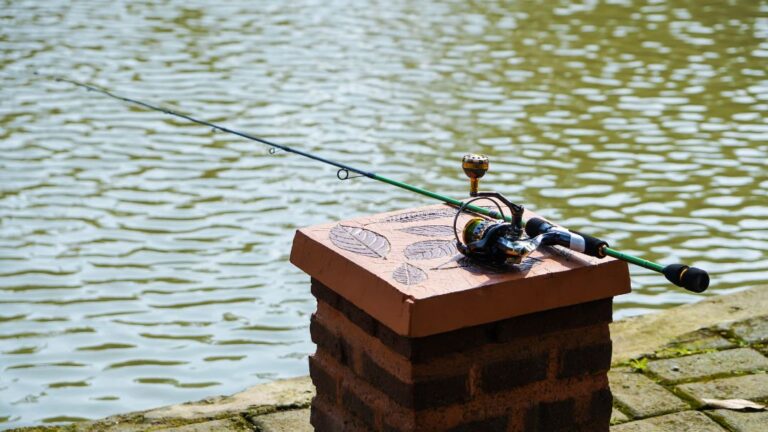Best Bait For Brook Trout
The best bait for brook trout is live worms or artificial lures that mimic their natural prey. Brook trout, also known as speckled trout, are a popular fish among anglers due to their beautiful colors and challenging nature.
Catching these feisty fish requires the right bait to entice them. One of the most effective baits for brook trout is live worms. As opportunistic feeders, brook trout are attracted to the wriggling movement of live worms, making them an irresistible treat.
Another option is to use artificial lures that mimic the appearance and behavior of their natural prey, such as small spoons, spinners, or nymph flies. By selecting the best bait, anglers can increase their chances of hooking into a trophy brook trout.
Choosing The Right Bait For A Successful Brook Trout Fishing Experience
Discover the secret to a successful brook trout fishing experience by choosing the best bait. Learn how to attract these elusive fish with our expert tips and techniques. Don’t miss out on the chance to reel in your next trophy catch.
Differentiating The Needs Of Brook Trout
Brook trout are known for their unique characteristics and preferences when it comes to bait. Understanding their needs is crucial to ensuring a successful fishing experience. Here are some key factors to consider:
- Habitat: Brook trout thrive in cold, clean, and clear water bodies such as streams, rivers, and lakes. They prefer areas with ample cover like rocks, logs, and overhanging vegetation.
- Feeding Habits: Brook trout are opportunistic feeders and have a diverse diet consisting of aquatic insects, crustaceans, small fish, and even terrestrial insects that fall into the water.
- Behavior: Brook trout are often active early in the morning and late in the evening. They tend to stay close to the bottom of the water column, using their exceptional camouflage to hide from predators.
Factors To Consider When Choosing Bait For Brook Trout
When selecting bait for brook trout, it’s essential to consider their natural food preferences and feeding patterns. Here are some factors to keep in mind:
- Imitation: Matching the hatch is crucial when it comes to brook trout fishing. Using bait that mimics their natural prey, such as fly patterns that resemble insects or small fish imitations, can be highly effective.
- Size and Color: Selecting bait that closely resembles the size and color of the natural prey in their environment is important. Opt for smaller-sized baits, as brook trout generally prefer smaller meals.
- Live Bait Options: Live bait, such as worms, minnows, and larvae, can be highly effective in attracting brook trout. Ensure that the live bait matches the size and color of their natural food sources.
- Artificial Lures: Artificial lures like spinners, spoons, and soft plastic baits are also popular choices for brook trout fishing. Experiment with different colors and retrieve speeds to find what works best.
- Seasonal Considerations: Brook trout behavior and feeding preferences can vary depending on the time of year. Adjust your bait selection accordingly, keeping in mind the seasonal availability of their natural prey.
Remember, successful brook trout fishing requires a deep understanding of their habitat, feeding habits, and the right choice of bait. By considering these factors and tailoring your approach, you can increase your chances of a rewarding fishing experience.
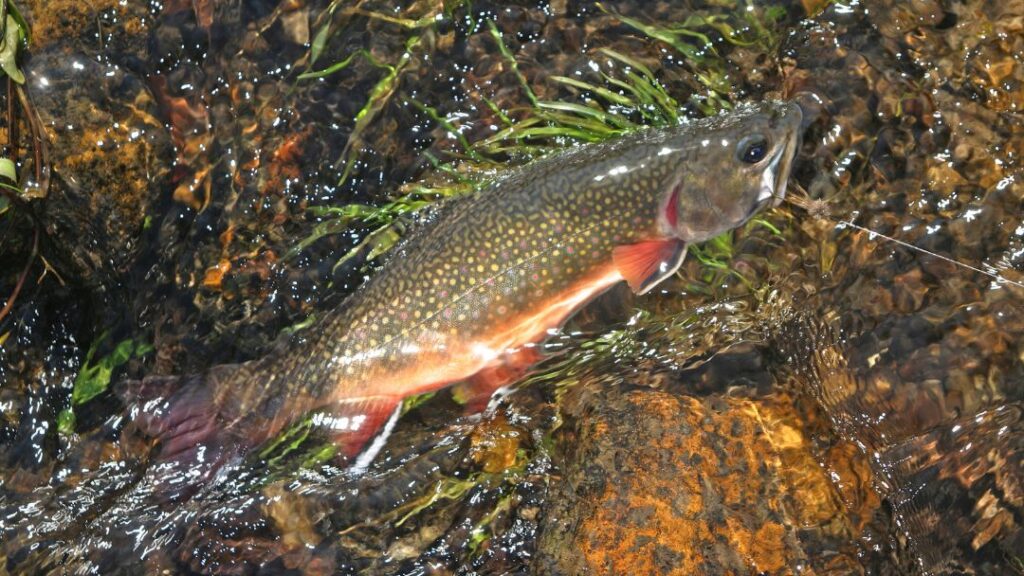
Natural Bait Options For Brook Trout Fishing
Explore the best natural bait options for brook trout fishing. Catch more trout with these effective bait choices.
1. Live Insects: A Natural Favorite For Brook Trout
Brook trout have a natural affinity for live insects, and using them as bait can greatly enhance your chances of a successful fishing trip. Here are some key points to consider when using live insects as bait for brook trout:
- Variety is key: Brook trout are opportunistic feeders and are attracted to a wide range of live insects, so it’s important to have a variety of options available.
- Match the hatch: Take note of the insects that are prevalent in the brook trout’s habitat. Observing the insects that are currently present can help you choose the most effective bait to use.
- Fly fishing with artificial imitations: If you’re into fly fishing, using artificial flies that mimic live insects can be highly effective. Match the size, shape, and color of the insects in the water for the best results.
- Popular live insect baits: Some of the most effective live insect baits for brook trout include mayflies, caddisflies, stoneflies, grasshoppers, and crickets. These insects are commonly found near trout streams and have proven to be irresistible to brook trout.
2. Worms: A Classic Bait For Brook Trout Fishing
Worms have long been a classic and reliable bait choice for brook trout fishing. Their natural appeal and easy availability make them a popular choice among anglers. Here are some important points to know when using worms as bait for brook trout:
- Freshness matters: Brook trout have a keen sense of smell and can easily detect if a worm is not fresh. So, it’s crucial to use fresh and lively worms to attract their attention.
- Different worm types: Various types of worms work well as bait for brook trout. Commonly used options include earthworms, nightcrawlers, and red wigglers. Experiment with different worm types to see which ones the brook trout in your area prefer.
- Presentation is key: When using worms as bait, it’s crucial to present them naturally and enticingly. Thread the worm onto the hook carefully, making it look as lifelike as possible.
- Adjusting the depth: Depending on the water depth and conditions, you may need to adjust the depth at which you fish with worms. Brook trout tend to prefer deeper, cooler areas during warmer weather, so keep that in mind for optimal results.
3. Minnows: Effective Bait For Brook Trout In Larger Bodies Of Water
When targeting brook trout in larger bodies of water such as lakes or reservoirs, using minnows as bait can be highly effective. Here are some important things to consider when using minnows as bait for brook trout:
- Selecting the right size: Choose minnows that are similar in size to the prey that brook trout commonly feed on in the specific body of water you’re fishing. Matching the size will increase your chances of attracting the attention of these elusive fish.
- Hooking the minnow: Hook the minnow through the back or mouth to give it a natural swimming motion in the water. This presentation is more likely to entice brook trout to strike.
- Depth control: Depending on the time of year and water temperature, brook trout may be found at varying depths. Experiment with fishing at different depths to identify the most productive level.
- Scent enhancement: Adding scent attractants to your minnow bait can help mask any unnatural odors and make it more enticing to brook trout. Consider using scented oils or gels specifically designed to attract fish.
By using these natural bait options, you’ll increase your chances of hooking that prized brook trout. The key is to observe the fish’s preferences and adapt your bait choice accordingly.
Remember, each brook trout fishing experience is unique, so don’t be afraid to experiment and find what works best in your particular fishing spot.
Artificial Bait Options For Brook Trout Fishing
Discover the top artificial bait options to enhance your success in brook trout fishing. From realistic fly patterns to bright spinners, these effective baits will entice brook trout to bite.
1. Spinners: Flashy Lures That Attract Brook Trout
Spinners are a popular choice among anglers targeting brook trout due to their ability to attract attention with their flashy appearance. These lures consist of a metal blade that spins when retrieved, creating vibrations and flashes that mimic the movements of small prey fish.
Here are some key points about spinners as artificial bait options for brook trout fishing:
- Wide Range of Sizes and Colors: Spinners come in a variety of sizes and colors, allowing anglers to match the hatch and effectively imitate the natural forage of brook trout. From smaller spinners mimicking minnows to larger ones replicating larger prey, there is a spinner suitable for different fishing conditions.
- Versatile in Different Water Conditions: Spinners work well in both clear and turbid waters, making them a versatile option for brook trout fishing. In clear water, vibrant and natural colors are commonly used, while in darker or murkier water, patterns with contrasting colors or those with added flash can attract attention.
- Retrieval Speed and Technique: The key to success with spinners is the retrieval speed and technique. Depending on the mood of the fish, slow or fast retrieves may work best. Experimenting with different retrieval speeds and pauses can entice brook trout into striking.
- Seasonal Considerations: The effectiveness of spinners for brook trout can vary depending on the season. During the spring and fall, when brook trout are more active and aggressive, faster and more aggressive retrieves may yield better results. In the summer, when the water is warmer and trout may be more sluggish, slower and more subtle presentations can be effective.
2. Crankbaits: Versatile Lures For Brook Trout In Various Conditions
Crankbaits are another effective artificial bait option for targeting brook trout. These lures are designed to mimic the movements and appearance of prey fish, enticing brook trout to strike. Here are some key points about crankbaits as bait options for brook trout fishing:
- Diving Depths: Crankbaits come in various diving depths, allowing anglers to target different depths where brook trout may be holding. Shallow diving crankbaits work well in shallower waters, while deeper diving ones are ideal for fishing in deeper pools or below structures.
- Realistic Action: The realistic swimming action and wobbling motion of crankbaits make them irresistible to brook trout. The erratic movements and vibrations created by these lures imitate injured or fleeing baitfish, triggering aggressive strikes from brook trout.
- Wide Range of Colors and Patterns: Crankbaits are available in a wide range of colors and patterns, allowing anglers to choose options that closely resemble the forage fish in their fishing area. Matching the color and size of the crankbait to the natural prey can increase the chances of success.
- Versatility in Different Water Conditions: Crankbaits can be successful in various water conditions, including clear, murky, or fast-moving water. Their ability to generate attention and provoke strikes makes them a versatile choice for brook trout fishing in different settings.
- Retrieval Speed and Pause: Experimenting with the retrieval speed and adding occasional pauses can be effective in triggering strikes from brook trout. Varying the speed and action of the crankbait can imitate different prey fish behaviors and increase the chances of enticing a strike.
3. Soft Plastic Baits: Realistic And Versatile Option For Brook Trout Fishing
Soft plastic baits, such as worms, grubs, and minnow imitations, are a realistic and versatile option for brook trout fishing. These baits can closely mimic the appearance and movement of natural prey, making them enticing to brook trout. Here are some key points about soft plastic baits as artificial bait options for brook trout fishing:
- Realistic Appearance: Soft plastic baits can be manufactured to closely resemble the natural color, size, and shape of the forage fish in the area. This realism can make them highly effective in enticing strikes from brook trout.
- Versatility in Rigging: Soft plastic baits can be rigged on a variety of hooks and jig heads, allowing anglers to adapt to different fishing conditions. Whether fished on a jighead, Texas rig, Carolina rig or drop shot rig, soft plastic baits offer versatility and the ability to fish at various depths.
- Lifelike Action: Soft plastic baits provide a lifelike action when retrieved, mimicking the movements of injured or dying prey. Adding subtle twitches and pauses can further enhance the realism and trigger brook trout strikes.
- Durability and Reusability: Soft plastic baits tend to be more durable compared to natural baits, which can be an advantage when fishing in streams where snags and vegetation are common. Furthermore, they can be reused multiple times, making them cost-effective and practical for anglers.
- Weedless Options: Soft plastic baits can be rigged weedless, allowing anglers to fish in areas with thick vegetation or structure without getting snagged. This makes them an excellent choice for fishing in streams or rivers where brook trout may hide in cover.
Using Fly Fishing Techniques For Brook Trout
Discover the top bait choices for brook trout while utilizing effective fly fishing techniques to increase your chances of success on the water. With the right bait, you can enhance your angling experience and reel in these beautiful fish with ease.
1. Dry Flies: Topwater Fishing For Brook Trout
Fly fishing for brook trout involves using various techniques to entice these elusive beauties. One popular method is using dry flies, which imitate insects that sit on the water’s surface. This technique can be exciting as you watch brook trout rise to the surface to take your fly.
Here are a few key points to consider when using dry flies for brook trout:
- Match the hatch: Pay attention to the insects present in the specific area where you’ll be fishing. Choose dry flies that closely resemble the insects found in the brook trout’s natural habitat.
- Sizes and colors: Experiment with different sizes and colors of dry flies to see which ones the brook trout are most interested in. Sometimes, they prefer smaller flies, while other times, they’ll go for larger patterns.
- Presentation: Casting your dry fly gently onto the water’s surface is crucial. Mimic the natural movements of insects by using a drag-free drift, allowing your fly to float naturally downstream.
- Read the water: Look for areas where brook trout are likely to be feeding, such as riffles, pools, and under overhanging vegetation. Cast your dry fly into these locations to increase your chances of a strike.
2. Nymphs: Subsurface Fishing For Brook Trout
Another effective fly fishing technique for targeting brook trout is using nymphs. Nymphs are underwater flies that imitate the larval stage of insects. Brook trout often feed below the water’s surface, making nymph fishing a productive method. Here are some key things to keep in mind when using nymphs for brook trout:
- Choose the right pattern: Use nymphs that mimic the insects commonly found in brook trout rivers and streams. Caddisflies, mayflies, and stoneflies are all excellent choices.
- Weighted nymphs: To fish at the desired depth, use weighted nymphs or add split shots to the leader. This allows the nymph to sink and stay close to the brook trout’s feeding zone.
- Retrieve techniques: Experiment with various retrieve techniques, such as a slow and steady retrieve, or a twitch-and-pause method. Adapt your retrieve based on the feeding behavior of the brook trout and the water conditions.
- Strike detection: Keep a close eye on the end of your fly line, as any sudden movement or hesitation could indicate a brook trout has taken your fly. Be ready to set the hook swiftly.
3. Streamers: Aggressive Fishing Technique For Brook Trout
When brook trout are feeling aggressive or territorial, streamer fishing can be highly effective. Streamers are large, baitfish-like flies that can entice brook trout to strike out of instinct. This technique often appeals to the predatory nature of these fish.
Here are some essential factors to consider when using streamers for brook trout:
- Choose the right streamer: Opt for streamers that imitate the local baitfish, taking into account the size and color. Bullhead, sculpin, and minnow patterns are popular choices for enticing brook trout.
- Retrieve style: Vary your retrieve style to mimic the movement of injured baitfish. Short, quick strips mixed with pauses can trigger aggressive strikes. Experiment with different speeds and depths to find what works best.
- Cover more water: Streamer fishing allows you to cover a larger area of water compared to dry flies or nymphs. Cast across current or downstream, working along the riverbank or near submerged structures where brook trout are likely to hide.
- Be prepared for aggressive takes: Brook trout are known for their aggressive strikes when targeting streamers. Be ready for a jolting strike, and ensure you have a firm grip on your rod to prevent fish from escaping.
Fly fishing for brook trout presents an exciting challenge, and each technique has its own thrill. Whether you prefer the delicacy of dry flies, the subsurface action of nymphs, or the aggressive strikes of streamers, understanding these fishing techniques will increase your chances of success on the water.
So tie on your favorite fly, head to a brook trout stream, and enjoy the experience of targeting these vibrant and spirited fish.
Conclusion
After exploring the top bait options for Brook Trout fishing, it’s clear that using the right bait can significantly increase your chances of a successful catch. Worms are a tried and true option, appealing to the instincts of these fish.
Artificial lures, such as spinners and spoons, provide a more versatile and customizable approach, mimicking small fish or insects. Fly fishing enthusiasts will find success with fly patterns like the Woolly Bugger or Elk Hair Caddis. It’s important to consider the water conditions and the specific preferences of Brook Trout in your chosen fishing spot.
Ultimately, experimenting with different bait options and techniques will help you determine the most effective approach for your fishing adventures. Remember to stay aware of local regulations and respect the environment while enjoying this thrilling fishing experience. Get out there and reel in some beautiful Brook Trout!


